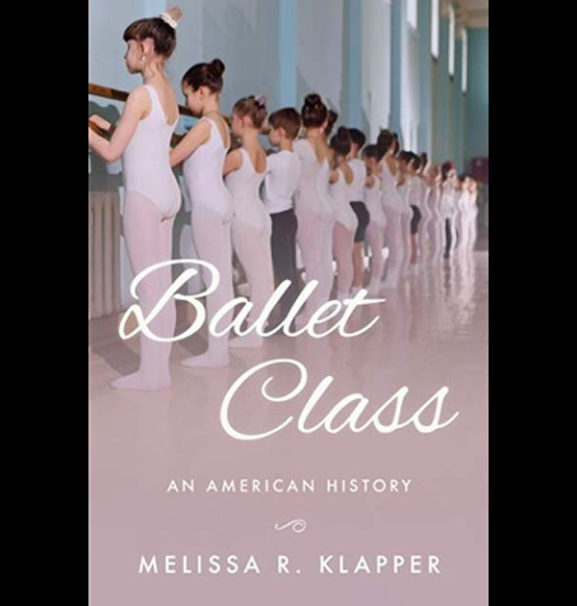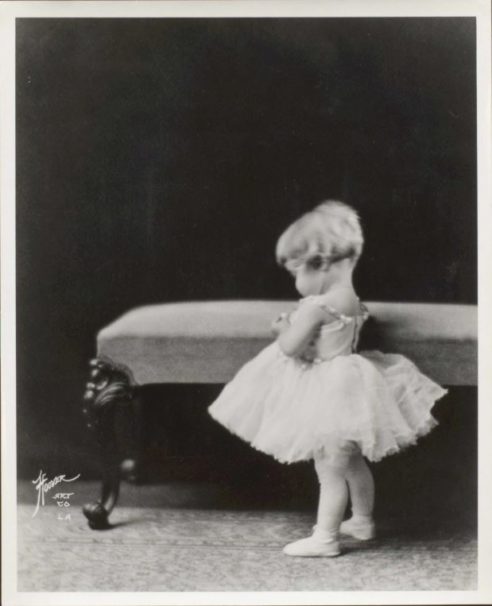
ed. note: artsmeme is pleased to publish a two-part excerpt from a new book, Ballet Class: An American History by Melissa R. Klapper (Oxford University Press, March 2020). Our Los Angeles-based blog requested writing from Ms. Klapper that focuses on the early history of ballet training in our city. Part one below!
With no homegrown ballet of its own until well into the twentieth century, the U.S. depended on a constant influx of ballet teachers from Europe to provide instruction to children and professionals alike as well as to stage ballets as either stand-alone productions or as part of operas, vaudeville acts, and other types of performances. Through the first decades of the twentieth century, the general assumption was that the best teachers and dancers hailed from abroad.

Courtesy of the Library of Congress, Prints and Photographs Division
In the wake of political turmoil in Europe and especially in Revolutionary-era Russia, a significant number of Italian and Russian ballet masters made their way to the U.S. during the early twentieth century. Some of them settled in large cities where there were more performance opportunities for their students. Others, especially dancers who had toured with Anna Pavlova and the Ballet Russe companies, settled in towns and cities large and small over the country and began offering lessons once their performance careers drew to a close. It gradually became possible to say that, thanks to these European teachers, “there’s hardly a town of any size in America where you can’t find at least one good ballet school.”[i] New York, Los Angeles, and Chicago were home to their share of retired dancers, but dancers also settled in places like Indianapolis, Tulsa and Phoenix that had never been home to ballet teachers before.
In Los Angeles, proximity to the film industry attracted a number of notable European ballet teachers and encouraged parents to think about getting their children into show business. Ernest Belcher, Theodore Kosloff, Albertina Rasch, and Bronislova Nijinska, among others, all opened important schools in Los Angeles and trained such noteworthy dancers as Maria and Marjorie Tallchief, Agnes de Mille, and Cyd Charisse. When the Tallchief family moved to Los Angeles in search of better training for the sisters, Mrs. Tallchief immediately clashed with Belcher, who was so horrified by the showy tricks their previous ballet teacher had shown them that he insisted they forget everything they had ever learned. Mrs. Tallchief was not amused.[ii]
But in truth, the Tallchiefs were lucky to have found Belcher. A native of England with considerable experience performing in vaudeville and ballroom dance, Belcher opened a school in Los Angeles in 1916. He loosely adopted the Cecchetti pedagogy that had served as the basis of his own ballet training and developed a system of eight graded courses that took four years to complete if students took classes several times a week. He also offered an extra year for professional polish that focused not only on ballet but also on stage management, makeup, and the business side of a dancing career. Belcher found swift success, and by 1922 he had built a studio with classrooms, a balcony, dressing rooms, and an adjoining hall with a stage. In 1931, with more than 2000 students, he expanded again into a new building equipped with state of the art studios for all kinds of dancing, including tap, modern, acrobatics, hula, ballroom, and Spanish. Belcher worked continuously for the young film industry, choreographing, teaching actors to move, and training dancers for the movies. He also operated a booking office for his students, supporting the careers of dancers like Shirley Temple, June Roper, and his own daughter Marge, who was the original model for Disney’s Snow White animators and who later danced and choreographed as a team with her husband Gower Champion.[iii]

Courtesy of the Library of Congress, Music Division
His other activities notwithstanding, Belcher’s first love remained ballet, “a formal discipline” that required “time and application” and which he insisted should be taught incrementally and correctly. The Teachers Normal Course he conducted every year for a month accordingly scheduled two hours daily of ballet before classes in other forms of dancing because he believed ballet was the foundation of everything else. He required both written and practical exams on ballet technique from the teachers who came from all over the country to study at his studio, regardless of their specializations.[iv]
part two to come … notes below
[i] Thomas Armour in “The Ballets Russes, 1932-1962: A Symposium,” Dance Chronicle 15 (1992): 201; Sarah E. Fried-Gintis, “Elevated: Ballet and Culture in the U.S., World War II to the National Endowment for the Arts” (PhD Thesis, University of Southern California, 2010), 193.
[ii] Jessica Rachel Zeller, “Shapes of American Ballet: Classical Traditions, Teachers, and Training in New York City, 1909-1934,” (PhD Thesis, Ohio State University, 2012), 216-217; Beth Genné, “Dance in Film,” in Judith Chazin-Bennahum, ed., The Living Dance: An Anthology of Essays on Movement and Culture (Dubuque, IA: Kendall/Hunt, 2003), 197; Transcript of interview of Maria Tallchief by John Gruen, May 21, 1985, MGZMT 3-893, New York Library for Performing Arts.
[iii] W.E. Kirby, “An Interview with Ernest Belcher,” The American Dancer 4 (June 1931): 14-15; Naima Prevots, “Ernest Belcher and American Dance,” Dance Chronicle 10 (1987): 181, 188-189.
[iv] Prevots, “Ernest Belcher and American Dance,” 188, 216.
Melissa R. Klapper is Professor of History and Director of Women’s and Gender Studies at Rowan University. She is the author of Jewish Girls Coming of Age in America, 1860-1920, Small Strangers: The Experiences of Immigrant Children in the United States, 1880-1925, and Ballots, Babies, and Banners of Peace: American Jewish Women’s Activism,1890-1940, winner of the National Jewish Book Award in Women’s Studies.

The papers of Marge Champion are available at the Library of Congress Music Division. Her entire career as well as that of Gower Champion really merit a closer look! Thanks for selecting this charming photo!
That is the sweetest picture of Marge as a child. Beautiful story of her father. I am going to forward to her son Gregg Champion. Thanks Debra!